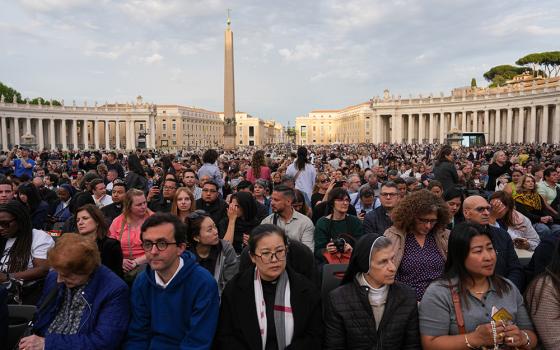PRINCETON, N.J. -- The South is the most religious region of the United States, according to a yearlong poll by Gallup.
Mississippi qualified as the most religious state in the nation, with 59 percent of its residents claiming to be "very religious." Next on the list was the only non-Southern state among the top 12: Utah, where 57 percent of its people say they are very religious.
Placing third overall was Alabama, with 56 percent of its residents claiming to be very religious. The only state in the top 12 with a significant Catholic population was Louisiana, ranking fourth in Gallup's poll, with 54 percent in the state saying they are very religious.
Ranking fifth through 12th were Arkansas, South Carolina, Tennessee, North Carolina, Georgia, Oklahoma, Texas and Kentucky. The percentage of those who said they were very religious in these states ranged from 54 percent for Arkansas to 47 percent for Kentucky.
The states with the smallest percentages of people who said they were very religious were New Hampshire and Vermont, with 23 percent each. But Vermont had a higher percentage (58) reporting that they were "nonreligious" than New Hampshire (52); these were the only states where more than half of the population said they were nonreligious.
Just ahead of these two states, those with the least religious population were, in ascending order, Maine, Massachusetts, Alaska, Oregon, Nevada, Washington, Connecticut, the District of Columbia and New York. The percentages of those who said they very religious in those states ranged from 25 percent for Maine to 32 percent for New York.
In Rhode Island, the nation's only Catholic-majority state, 32 percent of the population said they are very religious, 31 percent said they were moderately religious and 37 percent said they were nonreligious. Other states in the top 10 in terms of percentage of Catholic residents include Massachusetts, New York, Connecticut, Nevada and New Hampshire.
Overall, Gallup classifies 40 percent of Americans as very religious, meaning that religion is "an important part of their daily life" and that they attend religious services "every week or almost every week." Another 28 percent nationwide are "moderately religious," meaning that for them religion is important but they do not attend services, or that they attend services but do not consider religion important.
The remaining 32 percent of the U.S. population are nonreligious, meaning that religion is not an important part of their life and that they seldom or never attend services.
The survey was based on telephone interviews of a random sample of 353,492 adults ages 18 and up living in the United States. The margin of error in the poll was plus or minus 1 percentage point.
A Gallup announcement accompanying the release of the survey, conducted Jan. 1-Dec. 31, 2011, said the results have remained relatively stable over many years. "America remains a generally religious nation, with more than two-third of the nation's residents classified as very or moderately religious," it said.
State cultures seem to influence residents' religiosity, Gallup said.
"While Mississippi has the highest percentage of blacks of any state in the union, and while blacks are the most religious of any major race or ethnic groups in the country, the Magnolia State's white residents are highly religious on a relative basis compared with whites in other states," the report said.
"Vermonters who identify as Catholics or with Protestant denominations are less religious than Southern state residents who identify with the same religions."
Other states where more than 40 percent of their residents call themselves very religious are, in descending order, South Dakota, Kansas, Indiana, Missouri, North Dakota, Nebraska, West Virginia, Virginia, Idaho, New Mexico and Iowa.
Among the states where nonreligious residents made up more than a third of the population were Montana, Colorado, Hawaii, California, New Jersey, Wyoming and Arizona.
Delaware was the only state where more residents said they were moderately religious (34 percent) than very religious or nonreligious (33 percent each).

